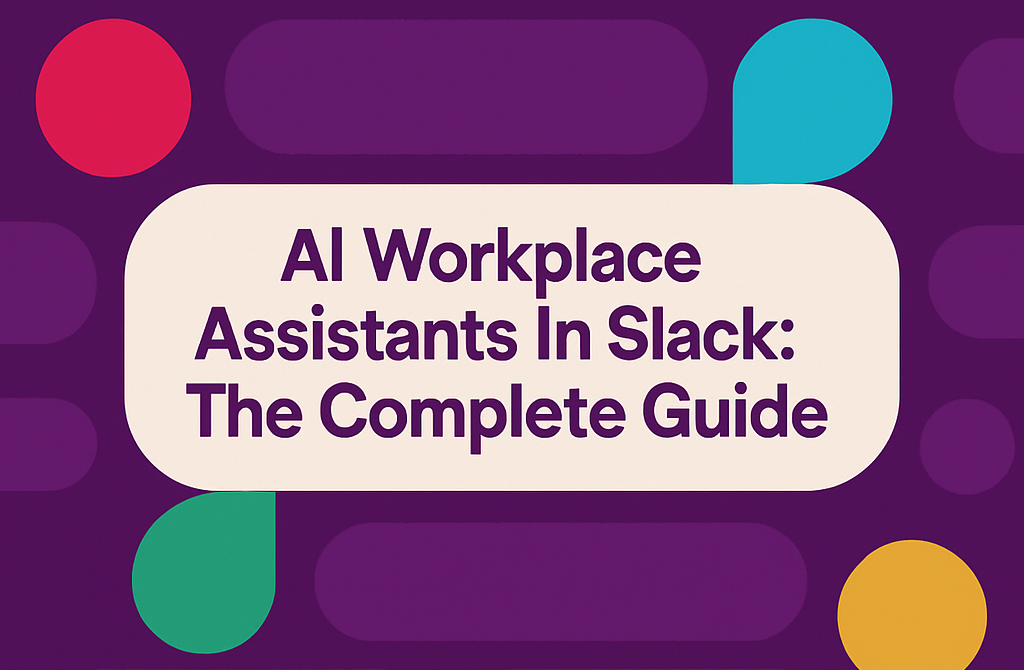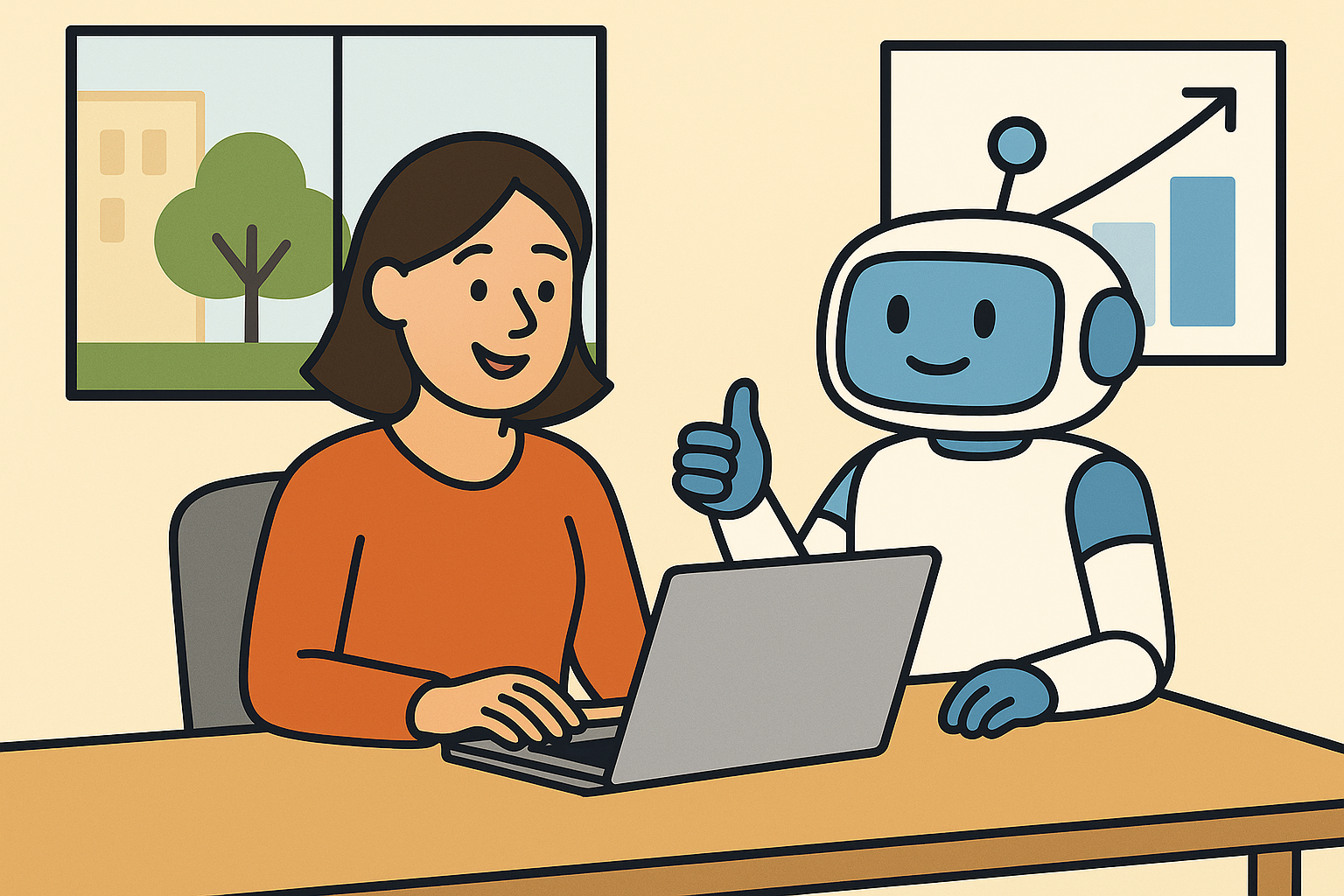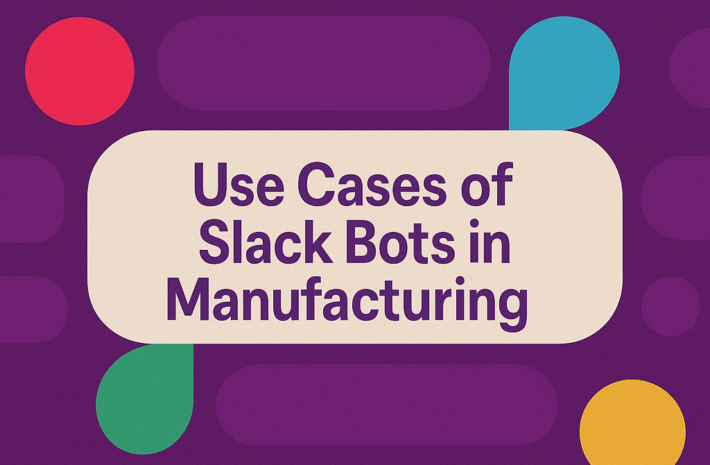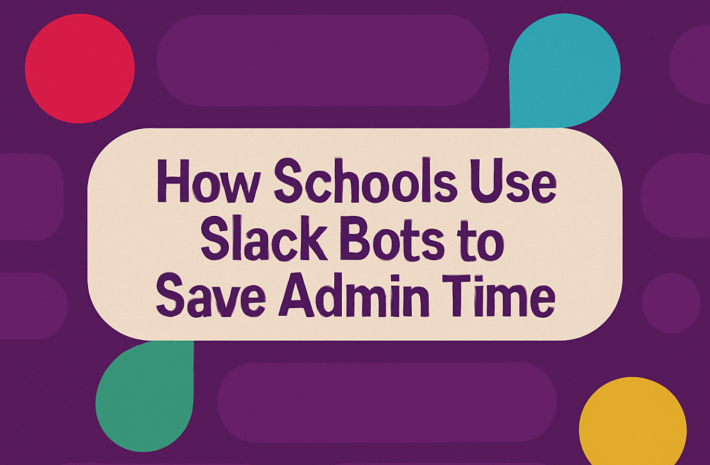AI Workplace Assistants in Slack: The Complete Guide to What, Why, and How

The modern workplace is a digital battlefield.
Between endless notifications, tool switching, and information overload, your team’s attention is under constant siege.
The result?
According to recent studies, employees spend nearly 60% of their day on “work about work” rather than their actual jobs.
To get things moving a little smoother and a little more productively, you can use an AI workplace assistant, specifically in Slack.
Not as another tool to manage but as a digital teammate that helps tame the chaos.
This guide walks you through implementing an AI workplace assistant in Slack—from building your business case to selecting the right solution, rolling it out effectively, and measuring success.
Whether you’re an IT leader, operations manager, or forward-thinking team lead, you’ll find actionable strategies to transform how your team works.
Let’s cut through the noise and get your team the intelligent support they deserve.
What is an AI workplace assistant (really)?
An AI workplace assistant is essentially an intelligent tool that understands natural language, automates routine tasks, finds information, and helps your team work more efficiently—all within your existing workflow.
Unlike basic chatbots that follow rigid scripts, modern AI workplace assistants like Chat Hivemind can:
- Understand context and nuance in questions
- Generate high-quality content from simple prompts
- Access and synthesize information across your workspace
- Learn from interactions to become more helpful over time
- Integrate with your existing tools and workflows
What makes Slack the ideal home for your AI assistant? It’s where your team already lives. No new apps to download, no new tabs to keep open, no new passwords to remember—just enhanced capabilities right where work already happens.
So, why implement it?
Well, think of all the tasks you can complete within Slack with a few prompts without the stress and fuss of a traditional process. Have a meeting > prompt Slack to summarise and create a to-do list.
Done.
But, if you champion an AI workplace assistant, you need hard numbers, not vague promises about “transformation.” Here’s your ammunition:
- Time savings: Teams using AI assistants report reclaiming 5-7 hours per employee per week from routine tasks.
- Knowledge retention: 80% of organizational knowledge is undocumented. An AI assistant helps capture and make this accessible.
- Reduced context switching: Each “quick switch” between tools costs 23 minutes of refocusing time. Keeping work in Slack reduces these costly transitions.
- Faster onboarding: New team members can get answers immediately rather than interrupting colleagues.
- Better work-life balance: By handling after-hours questions, an AI assistant reduces off-clock stress.
The math is simple: If your average employee costs $50/hour fully loaded and saves just 3 hours weekly, that’s $7,800 in reclaimed productivity per employee annually.
For a team of 20, we’re talking $156,000 worth of time redirected to high-value work.
Before you begin: Smart planning pays off

Before you dive into implementation, take these critical planning steps:
1. Define your primary use cases
The most successful implementations start by solving specific pain points. Common starting points include:
- Meeting summaries and action item tracking
- Document creation and content generation
- Project planning and timeline creation
- Information retrieval and institutional knowledge
- Cross-team collaboration and communication
Pro tip: Survey your team about their biggest time-wasters. The results might surprise you—and will guide your implementation priorities.
2. Set clear success metrics
What does “success” mean for your AI workplace assistant? Define specific metrics like:
- Time saved per employee per week
- Reduction in internal support questions
- User adoption rates (% of the team using the assistant weekly)
- Satisfaction scores from team surveys
- Decrease in tool switching frequency
Without clear metrics, you can’t demonstrate ROI or improve over time.
3. Identify stakeholders and champions
Your implementation needs these key players:
- Executive sponsor: Who will provide top-level support?
- Department leads: Who needs to approve and champion adoption?
- Power users: Which team members will be early adopters and help others?
- IT support: Who will handle technical questions during rollout?
Getting buy-in early prevents headaches later.
How to choose the right AI workplace assistant

Not all AI workplace assistants are created equal. When evaluating options, prioritize these factors:
1. Intelligence and capability
Can it understand complex requests? Does it provide useful, contextual responses? Test with real-world scenarios from your team.
2. Slack integration depth
Look for assistants explicitly built for Slack, not generic solutions with basic Slack connectivity. Native integration means better user experience.
3. Security and compliance
Review the security practices, data handling policies, and compliance certifications. For regulated industries, this is non-negotiable.
4. Customization options
Can you train it on your company’s specific knowledge? Does it learn from interactions? The best assistants grow more valuable over time.
5. Support and training
Evaluate the onboarding process, training materials, and ongoing support. Implementation success often hinges on these “soft” factors.
Chat Hivemind stands out by offering deep Slack integration, robust security, and department-specific solutions that address unique team needs—whether you’re in marketing, engineering, HR, or project management.
A step-by-step approach to implementation
Ready to bring your AI workplace assistant to life? Here’s your roadmap:
Phase 1: Pilot Program (2-4 Weeks)
- Select your pilot team: Choose a department that’s tech-forward and deals with information overload.
- Technical setup: Follow these simplified steps:
- Visit your chosen provider’s website (e.g., chat-hivemind.com)
- Click “Add to Slack” and authorize with appropriate permissions
- Complete initial configuration (customization options, access controls)
- Create a dedicated #assistant-help channel for questions
- Initial training: Schedule a 30-minute intro session covering:
- Basic interaction patterns
- Top 5 use cases specific to your team
- What the assistant can and can’t do
- How to provide feedback
- Daily check-ins: During the first week, gather quick feedback each day to address issues early.
Phase 2: Controlled Expansion (4-8 Weeks)
- Analyze pilot results: Review usage patterns, feedback, and problems encountered.
- Refine your approach: Adjust training, use cases, and configurations based on pilot learnings.
- Expand to 2-3 more teams: Choose departments with different work patterns to test versatility.
- Document success stories: Collect specific examples of how the assistant helped solve real problems.
Phase 3: Full Deployment (8-12 Weeks)
- Company-wide announcement: Share pilot success stories and clear instructions.
- Department-specific sessions: Conduct focused training showing relevant use cases for each team.
- Create resources: Develop a simple internal wiki page with tips, examples, and FAQs.
- Establish feedback loops: Set up regular check-ins to gather ongoing improvement ideas.
This phased approach minimizes disruption while maximizing adoption.
How to really drive user adoption (The Make-or-Break Factor)
The best AI assistant in the world is useless if your team doesn’t embrace it. These strategies drive successful adoption:
1. Make it incredibly easy to start
Create “starter prompts” tailored to each department. For example:
- For marketing: “Draft a social media post about our new product launch”
- For project managers: “Create a timeline for our Q2 initiative.”
- For customer support: “Summarize the key issues from today’s support tickets”
People are more likely to try something when they don’t have to think about how to begin.
2. Share wins publicly
Create a dedicated channel where people can share helpful responses from the assistant. Social proof is powerful—when people see colleagues benefiting, they want the same advantage.
3. Lead by example
Leaders should visibly use the assistant in their workflows. When the VP of Marketing asks the assistant to draft an announcement in a public channel, others notice.
4. Gamify early adoption
Consider a simple challenge: “Try the assistant for these three tasks this week and share your experience.” Small incentives like coffee gift cards can drive initial usage.
5. Remove friction relentlessly
Monitor where people get stuck and fix those issues immediately. Early frustrations can permanently turn users away.
How to measure success and expand impact
After 90 days, evaluate your implementation against your predefined metrics. Look for:
- Usage patterns: Which teams and individuals are using the assistant most? For what purposes?
- Time savings: Survey users about how much time they’re saving weekly.
- Quality of work: Has the assistant improved output quality? Reduced errors?
- User feedback: What do team members like? What’s still frustrating?
Based on these insights, create your expansion plan:
- Capability expansion: Which new features or use cases should you enable?
- Integration deepening: Should you connect the assistant to more of your tools and data?
- Training refinement: What additional guidance would help users get more value?
- Knowledge enhancement: How can you feed more organizational knowledge to the assistant?
The most successful implementations continually evolve based on real-world usage.
To illustrate the potential impact, consider this case study:
A marketing agency with 45 employees implemented an AI workplace assistant in Slack to help with content creation, meeting summaries, and project planning. Results after six months included:
- 22% reduction in time spent on routine writing tasks
- 15% faster project delivery timelines
- 89% team adoption rate (40 of 45 employees using weekly)
- $310,000 estimated annual productivity gain
- Unexpected benefit: improved work-life balance as after-hours questions could be addressed by the assistant
The key to their success? They started with clear use cases tied to existing pain points, ensured easy onboarding, and celebrated early wins demonstrating clear value.
Common challenges (And how to overcome them)
Even the smoothest implementations face hurdles. Here’s how to handle the most common issues:
Challenge: “It doesn’t understand what I’m asking.”
Solution: Create a “how to ask” guide with examples of effective prompts. Remember that interaction with AI assistants is a learned skill.
Challenge: “I forget it’s available.”
Solution: Integrate the assistant into existing workflows. For example, automatically tagging it in project kickoff channels or meeting summary threads.
Challenge: “I’m concerned about privacy.”
Solution: Be transparent about data handling, provide clear usage guidelines, and give teams control over where the assistant is and isn’t active.
Challenge: “It sometimes gives incorrect information.”
Solution: Establish a simple feedback mechanism and set proper expectations. No AI is perfect, but good ones improve with feedback.
Looking ahead: The future of AI workplace assistants
As you implement your AI workplace assistant, keep these emerging trends in mind:
- Deeper personalization: Assistants will increasingly adapt to individual working styles.
- Proactive assistance: Beyond answering questions, future assistants will anticipate needs.
- Cross-platform presence: While Slack is the ideal starting point, expect expansion across your digital workspace.
- Specialized capabilities: Department-specific features will become more sophisticated.
Stay flexible in your implementation to accommodate these advances.
Wrapping up
Implementing an AI workplace assistant in Slack isn’t just about adopting new technology—it’s about fundamentally improving how work happens in your organization.
When done thoughtfully, it reduces busy work, enhances collaboration, preserves knowledge, and allows your team to focus on their highest-value contributions.
The most important step is simply to begin.
Start small, focus on real problems, measure results, and expand based on success.
The organizations seeing the biggest gains aren’t necessarily those with the biggest budgets or the most technical teams—they’re the ones that approached implementation as a continuous improvement process rather than a one-time event.
Your team is ready for more intelligent support. The technology is mature. The ROI is clear. What are you waiting for?
Ready to transform your workplace?
Chat Hivemind brings AI workplace assistant capabilities directly to your Slack environment with industry-leading intelligence and security.
Start your free trial today and see how much more your team can accomplish with an AI teammate handling the routine work.
Get Started with Chat Hivemind →
Your future self (and team) will thank you for the hours of busy work you’ll never have to do again.
Marketing Manager - Hivemind




